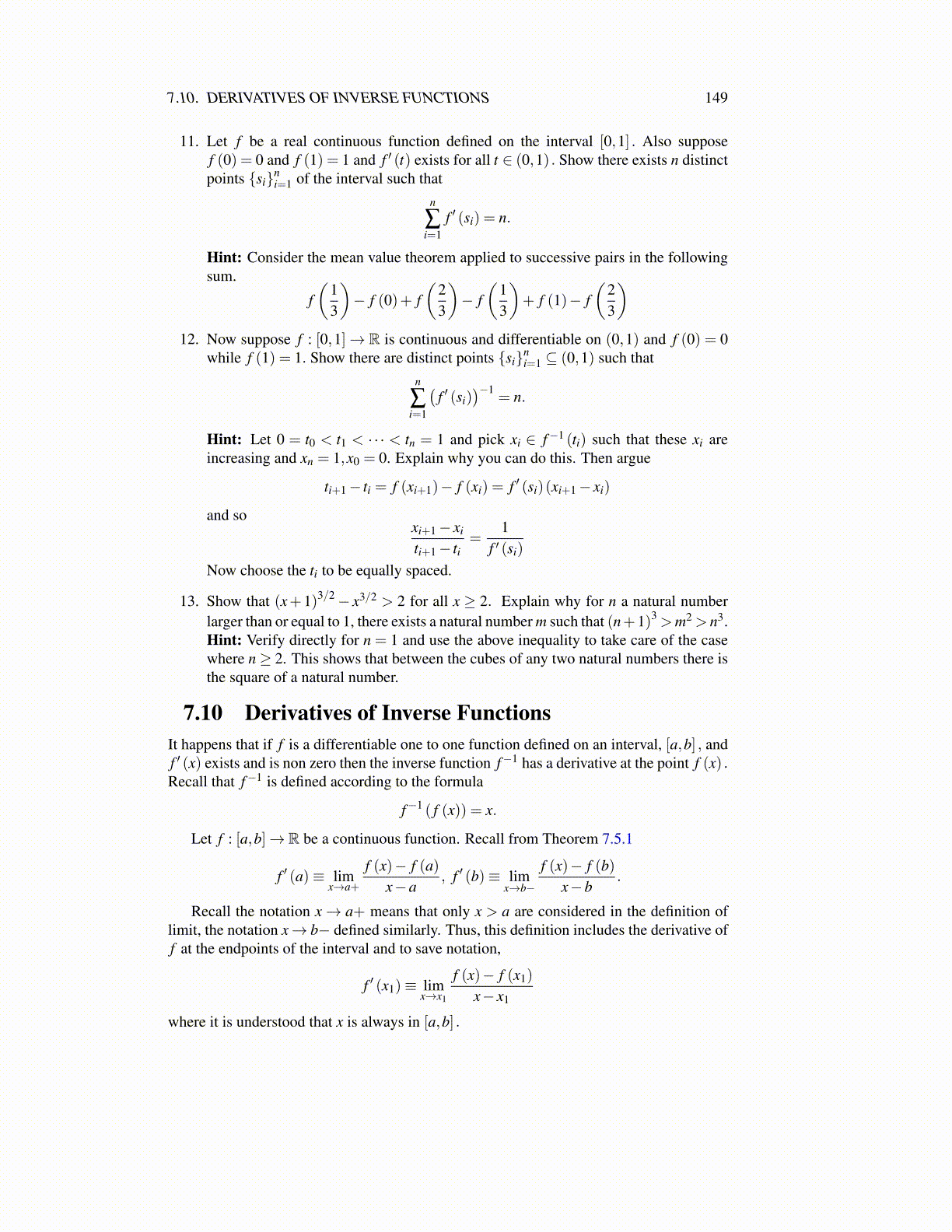
7.11. DERIVATIVES AND LIMITS OF SEQUENCES 149
Corollary 7.10.2 Let U be an open set in F and let f : U → F be one to one andcontinuous such that f ′ (x1) ̸= 0 for x1 ∈U. Then, assuming f (U) is an open set and f−1
is also continuous at f (x1),3 it follows that(
f−1)′( f (x1)) =
1f ′(x1)
.
Proof: The proof is exactly the same as the one given above except you don’t considerthe case of an endpoint and |·| refers to the absolute value in either C or R.
Incidentally, the above argument works with virtually no change for n dimensionalsituations.
This is one of those theorems which is very easy to remember if you neglect the difficultquestions and simply focus on formal manipulations. Consider the following.
f−1 ( f (x)) = x.
Now use the chain rule on both sides to write(f−1)′ ( f (x)) f ′ (x) = 1,
and then divide both sides by f ′ (x) to obtain(f−1)′ ( f (x)) =
1f ′ (x)
.
Of course this gives the conclusion of the above theorem rather effortlessly and it is formalmanipulations like this which aid in remembering formulas such as the one given in thetheorem.
Example 7.10.3 Let f (x)= 1+x2+x3+7. Show that f has an inverse and find(
f−1)′(8) .
I am not able to find a formula for the inverse function. This is typical in useful ap-plications so you need to get used to this idea. The methods of algebra are insufficient tosolve hard problems in analysis. You need something more. The question is to determinewhether f has an inverse. To do this,
f ′ (x) = 2x+3x2 +7 > 0
By Corollary 7.8.6 on Page 145, this function is strictly increasing on R and so it has aninverse function although I have no idea how to find an explicit formula for this inversefunction. However, I can see that f (0) = 8 and so by the formula for the derivative of aninverse function, (
f−1)′ (8) = ( f−1)′ ( f (0)) =1
f ′ (0)=
17.
7.11 Derivatives and Limits of SequencesWhen you have a function which is a limit of a sequence of functions, when can you saythe derivative of the limit function is the limit of the derivatives of the functions in thesequence? The following theorem seems to be one of the best results available. It is basedon the mean value theorem. Thus it is understood that the functions are real valued anddefined on an interval of R. First of all, recall Definition 6.9.6 on Page 115 listed here forconvenience.
3In fact, this last assumption on the continuity of the inverse function is redundant but this is not a topic forthis book. In case that U is an open interval this was proved earlier, but it also is true even if U is an open subsetof C or Rp for p > 1.